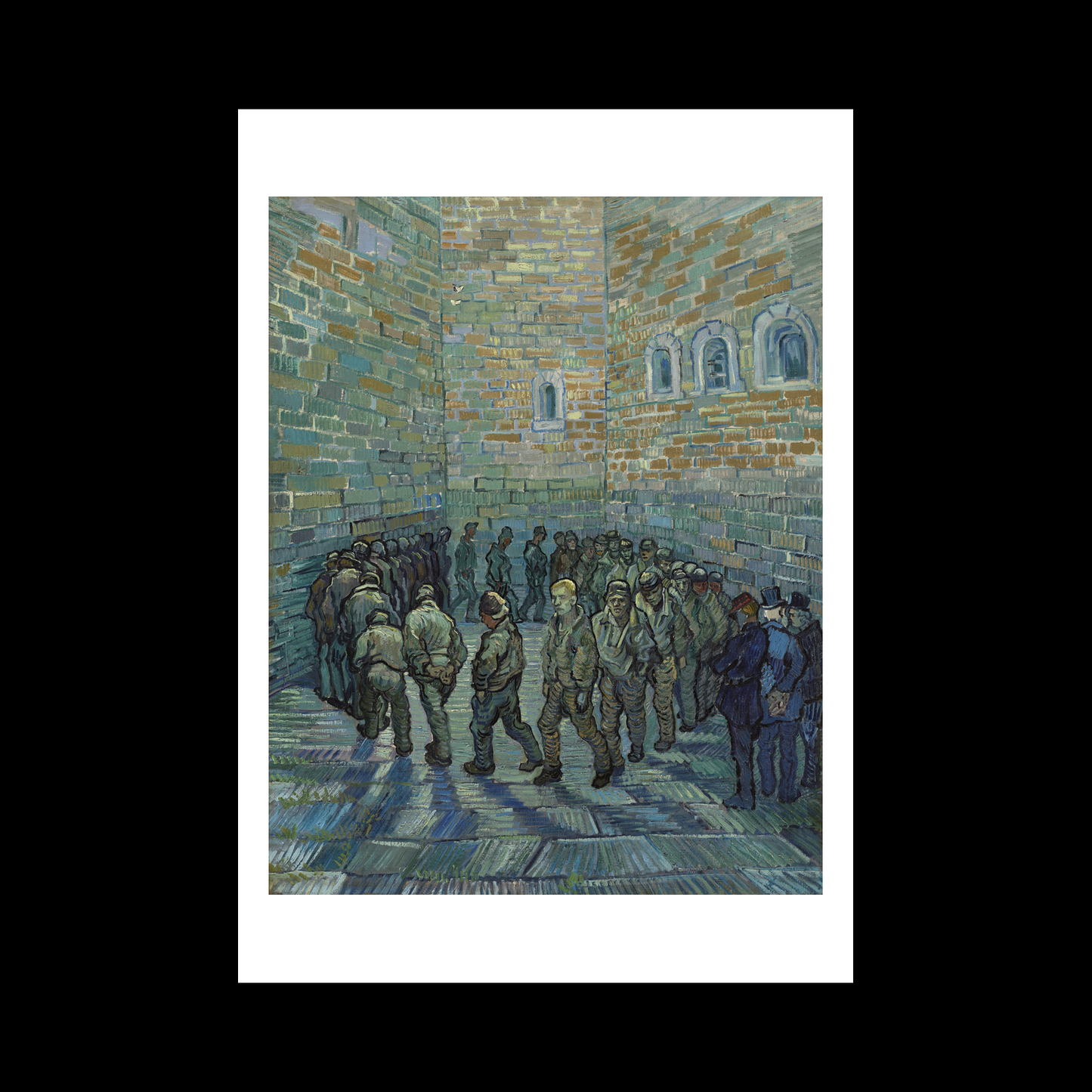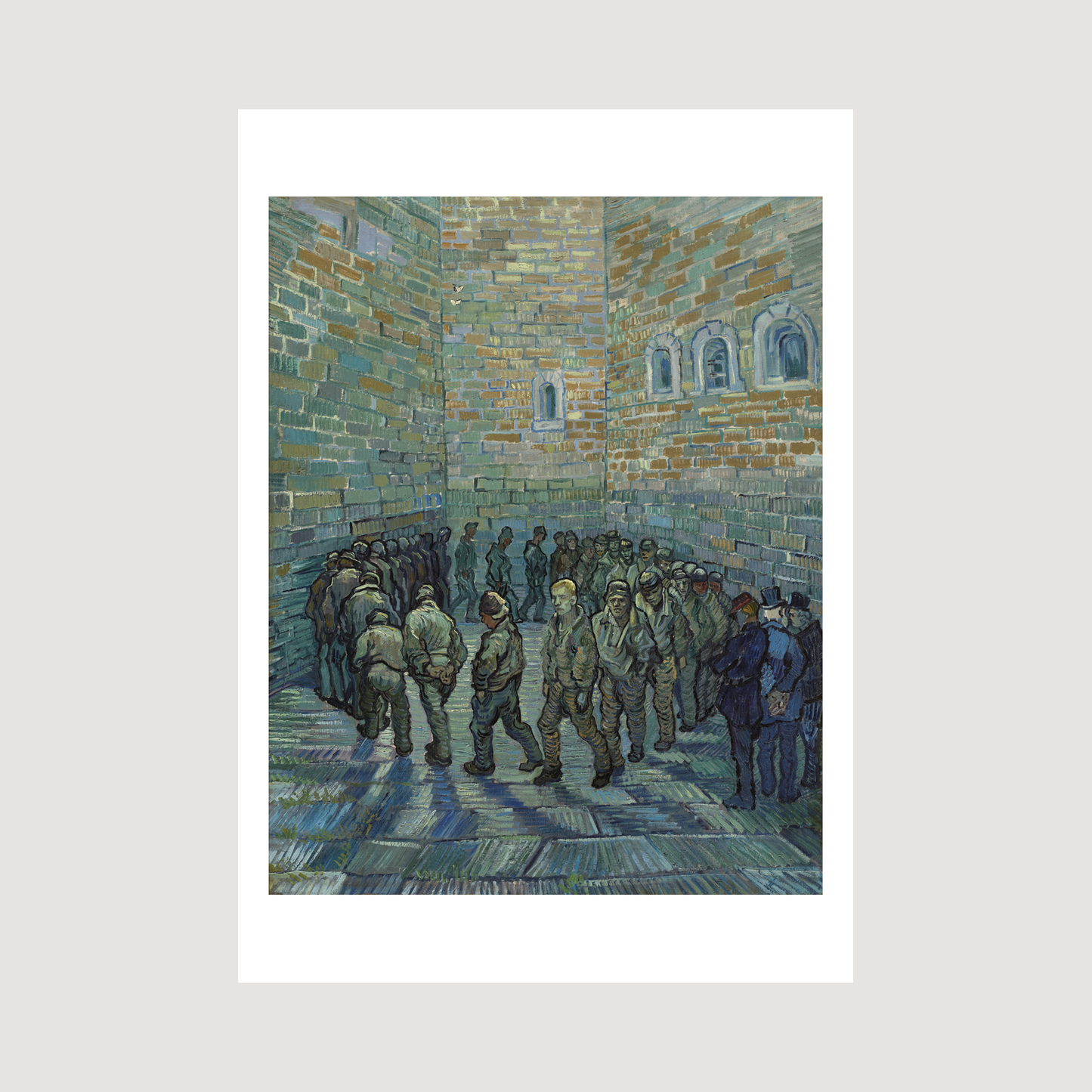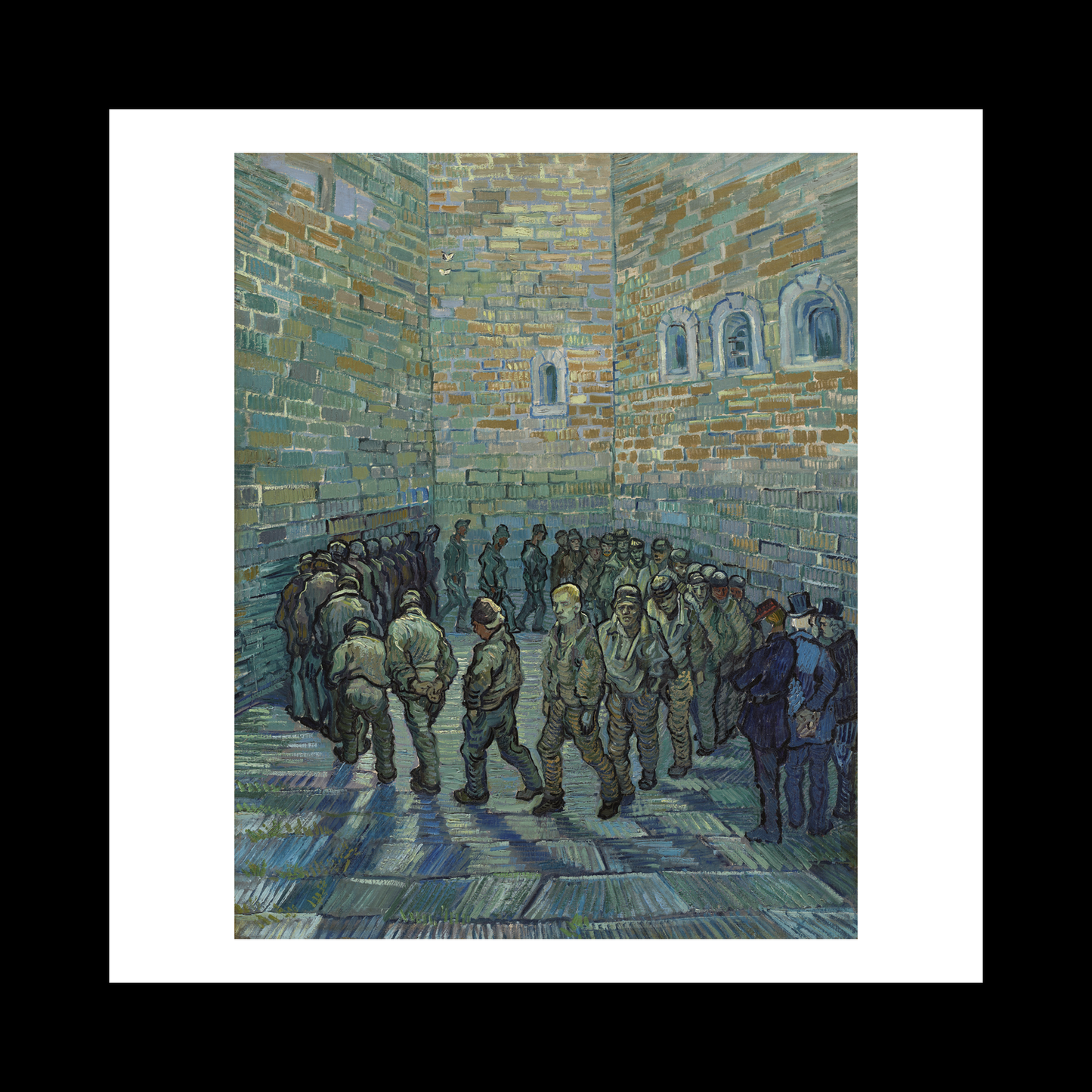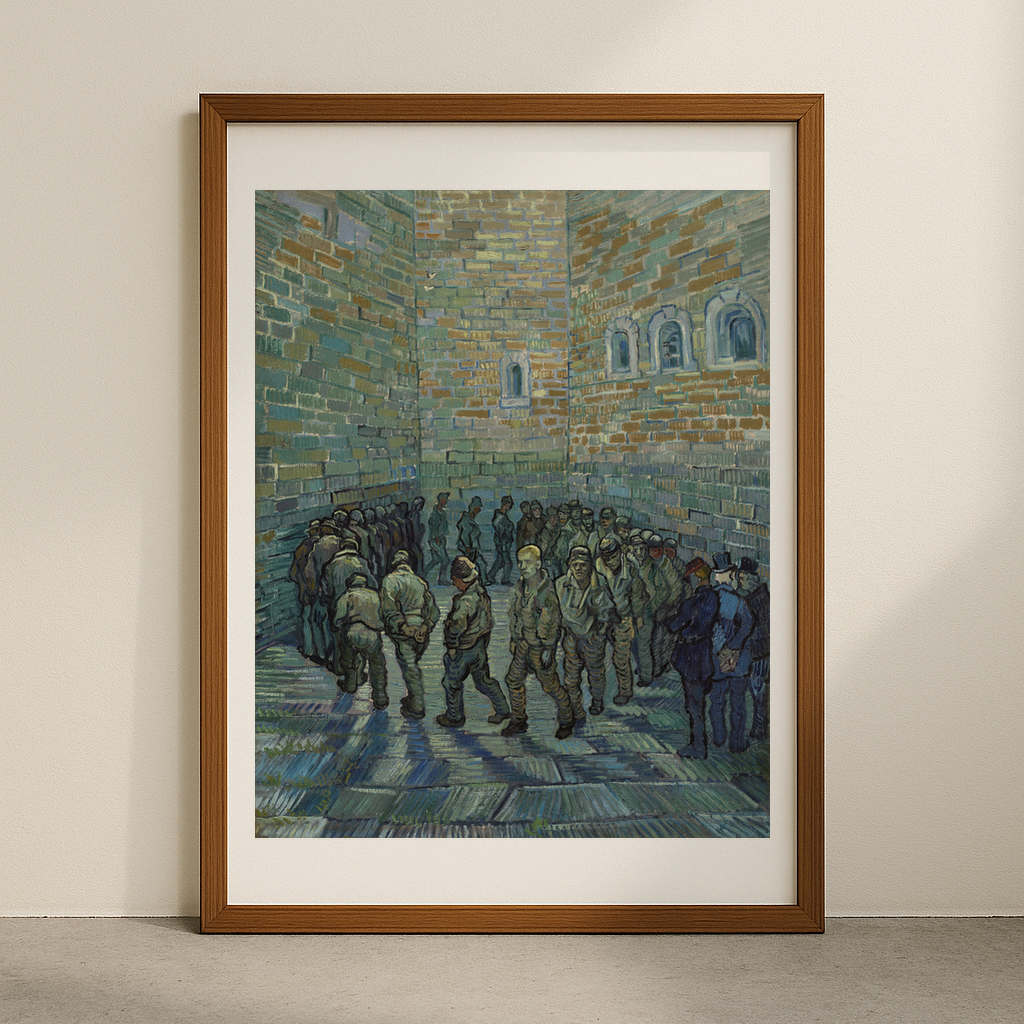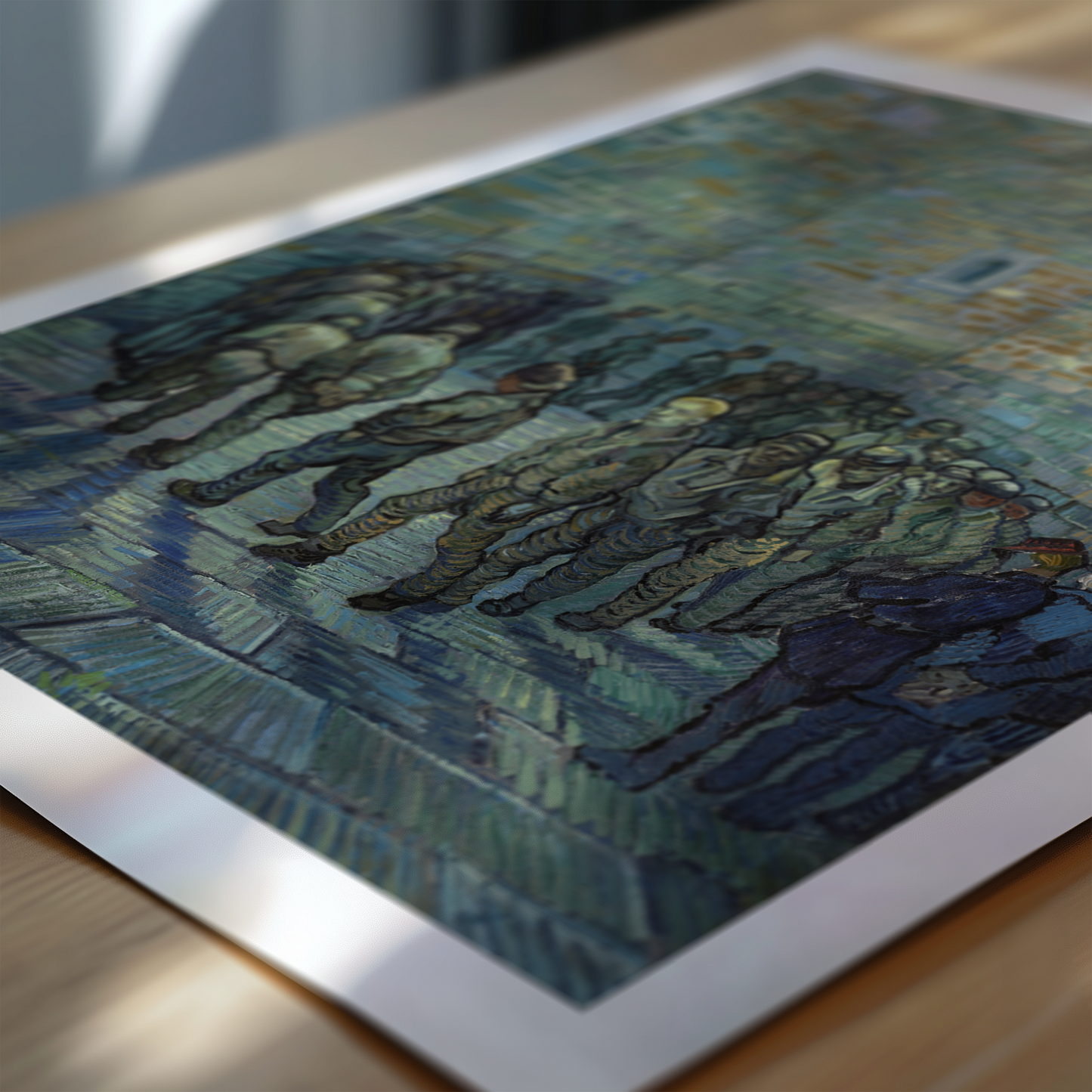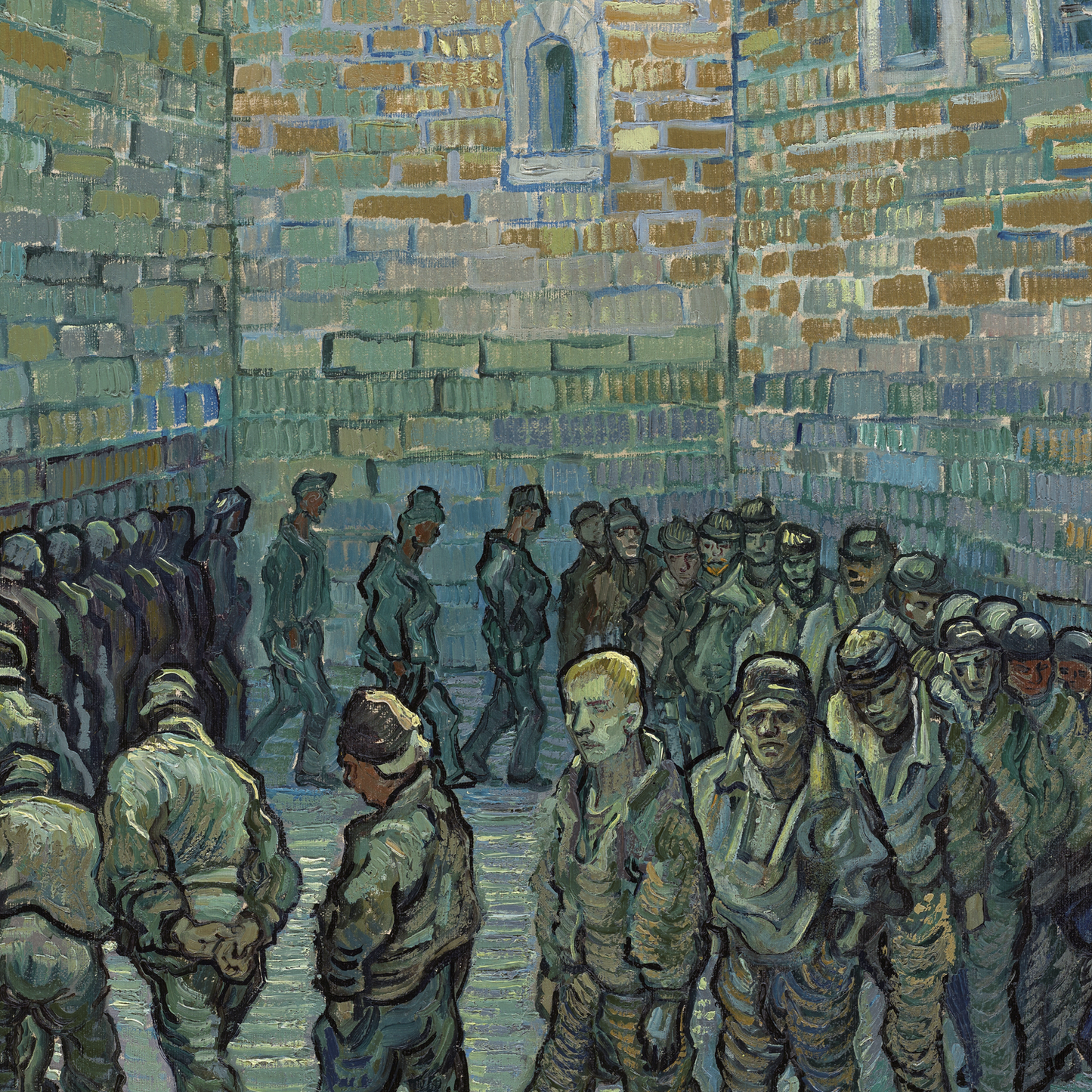1
/
of
6
Prisoners Exercising
Prisoners Exercising
Regular price
£12.45 GBP
Regular price
Sale price
£12.45 GBP
Taxes included.
Quantity
Couldn't load pickup availability
"Prisoners Exercising" (1890) by Vincent van Gogh offers a haunting glimpse into the artist's perspective during his stay at Saint-Paul-de-Mausole asylum in Saint-Rémy-de-Provence. The painting, based on an engraving by Gustave Doré, depicts prisoners walking in a circular pattern within a confined courtyard, creating a mesmerising spiral of human movement against stark prison walls.
Van Gogh's distinctive brushwork brings raw emotion to this scene, with thick, energetic strokes forming the figures of prisoners trudging in their endless circle. The high walls and harsh architecture are rendered in cold, institutional tones, while touches of bright colour in the sky above create a poignant contrast between freedom and confinement. The artist's choice to paint this subject while himself institutionalised adds layers of personal meaning to the work.
What makes this piece particularly compelling is how Van Gogh transformed Doré's black-and-white engraving into a powerful statement about isolation and human resilience. The artist's own experience with mental health struggles and confinement influenced his empathetic portrayal of the prisoners. He completed this work during one of his most productive periods, despite his circumstances, demonstrating how he channelled his own feelings of imprisonment into creative expression. The painting's circular composition symbolises both the monotony of institutional life and the eternal cycle of human suffering and perseverance.
View full details
Van Gogh's distinctive brushwork brings raw emotion to this scene, with thick, energetic strokes forming the figures of prisoners trudging in their endless circle. The high walls and harsh architecture are rendered in cold, institutional tones, while touches of bright colour in the sky above create a poignant contrast between freedom and confinement. The artist's choice to paint this subject while himself institutionalised adds layers of personal meaning to the work.
What makes this piece particularly compelling is how Van Gogh transformed Doré's black-and-white engraving into a powerful statement about isolation and human resilience. The artist's own experience with mental health struggles and confinement influenced his empathetic portrayal of the prisoners. He completed this work during one of his most productive periods, despite his circumstances, demonstrating how he channelled his own feelings of imprisonment into creative expression. The painting's circular composition symbolises both the monotony of institutional life and the eternal cycle of human suffering and perseverance.
